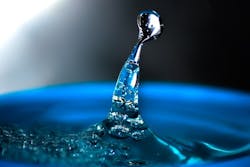As a kid, I remember watching some awful movie about a post-apocalyptic world where water was the most valuable commodity and people fought to the death to protect their family's access to clean water delivered by truck. The acting was over-the-top, but the message was not. The Earth is covered in water but scientists say only about 2.5 percent of that is fresh water. And most of that water isn't readily available. About 68 percent is tied up in ice sheets (though that may decrease as the world warms), and 30 percent is groundwater (reachable in some areas, but not in all), and just 1.3 percent is freshwater (see a great infographic detailing this from the USGS). So the reason I point this out is that there have been reports and analysis that water wars could be the future world wars ... just like that awful movie I watched as a kid.
In all reality, we've already had wars for water. Sit down and read the fascinating text "Cadillac Desert" by former National Resources Defense Council employee Marc Reisner who detailed the physical and political battles that surrounded the dam building projects of America's western regions. Consider that the United Nations says 1 in 6 persons don't have access to what it considers the minimum amount of daily freshwater that are needed for basic health and comfort standards. Consider that there are water fights between states like Georgia and Tennessee and Alabama every year over access to freshwater – and these are some of our most water-rich states, anyone who has had their car stuck in the mud of Georgia clay in the spring will know that. Or consider that the U.S. so uses the water of the Colorado River that it's barely a trickle by the time it reaches Mexico's Baja area, and that we have to pay for a desalination facility just to keep the river below treaty-agreed salt maximums!
So, what's the lesson? Protect our water supplies. The city's pond on a hill, the neglected water tank, the maze of piping, the smelly treatment plant: These are the elements that allow us to bathe each day, stay hydrated and have sanitary conditions. This is the infrastructure that's difficult to protect. You can't put a lock on thousands of miles of piping. It's hard to secure a remote pond that feeds your urban utilities. It's hard to believe a sewage plant even needs a fence considering the odors, but if all the analysts are right, it's what's next in security.
About the Author

Geoff Kohl
Editorial Director/Editor-in-Chief/Associate Publisher
Geoff Kohl is the Marketing Director for the Security Industry Association (SIA). He is the former Editor-in-Chief of SecurityInfoWatch.com
